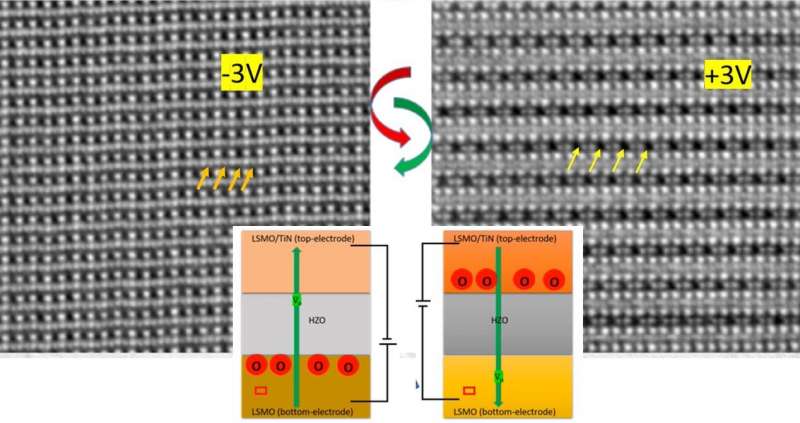Hafnium-based thin films, with a thickness of only a
few nanometres, exhibit an unconventional form of ferroelectricity.
This allows the construction of nanometre-sized memories or logic
devices. However, it was not clear how ferroelectricity could occur
at this scale. A study that was led by scientists from the
University of Groningen showed how atoms move in a hafnium-based
capacitor: migrating oxygen atoms (or vacancies) are responsible
for the observed switching and storage of charge. The results,
which were published online by the journal Science on 15 April,
point the way to new ferroelectric materials.



